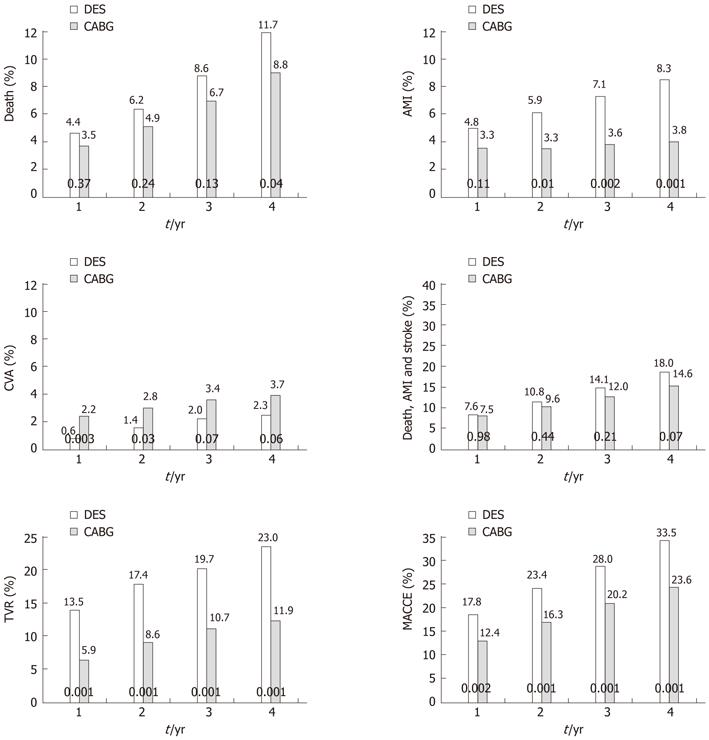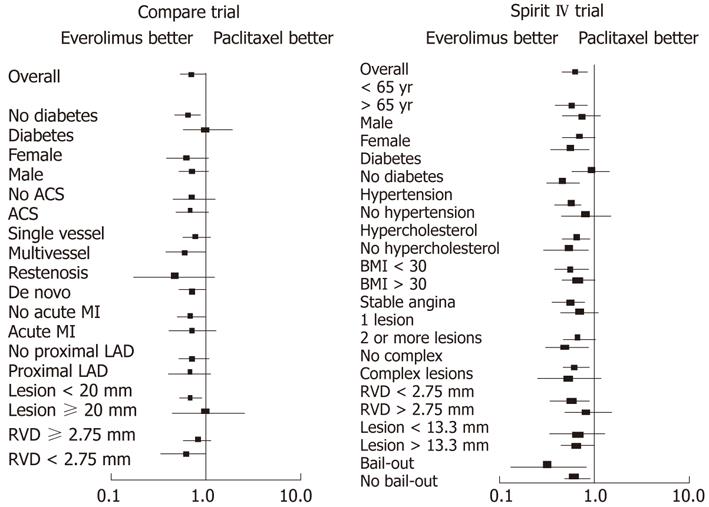Copyright
©2012 Baishideng Publishing Group Co.
World J Cardiol. Aug 26, 2012; 4(8): 242-249
Published online Aug 26, 2012. doi: 10.4330/wjc.v4.i8.242
Published online Aug 26, 2012. doi: 10.4330/wjc.v4.i8.242
Figure 1 Mortality rate in ASCERT registry by year in adjusted and unadjusted groups.
A: Unadjusted analysis (relative risk with CABG); B: Adjusted analysis by inverse probability weighting (relative risk with CABG). Modified from Weintraub et al[15]. Comparative Effectiveness of Revascularization Strategies[15]. CABG: Coronary artery bypass surgery; PCI: Percutaneous coronary interventions.
Figure 2 ERACI III results by year.
Death, acute myocardial infarction (AMI), major adverse cardiovascular events (MACCE) and target vessel revascularization (TVR) increase over time[20].
Figure 3 Increased rate of cardiac events at one, two, three and four years of follow-up in the syntax trial in both groups: drug eluting stent and coronary artery bypass surgery[21-23].
AMI: Acute myocardial infarction; CVA: Cerebrovascular accident; TVR: Target vessel revascularization; MACCE: Major adverse cardiovascular events; DES: Drug eluting stent; CABG: Coronary artery bypass surgery.
- Citation: Rodríguez AE, Fernández-Pereira C, Rodríguez-Granillo AM. Changes in the safety paradigm with percutaneous coronary interventions in the modern era: Lessons learned from the ASCERT registry. World J Cardiol 2012; 4(8): 242-249
- URL: https://www.wjgnet.com/1949-8462/full/v4/i8/242.htm
- DOI: https://dx.doi.org/10.4330/wjc.v4.i8.242












